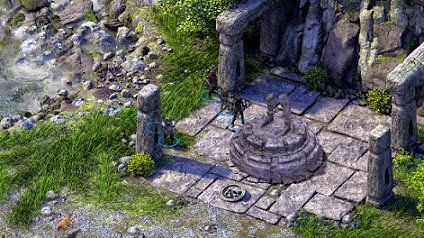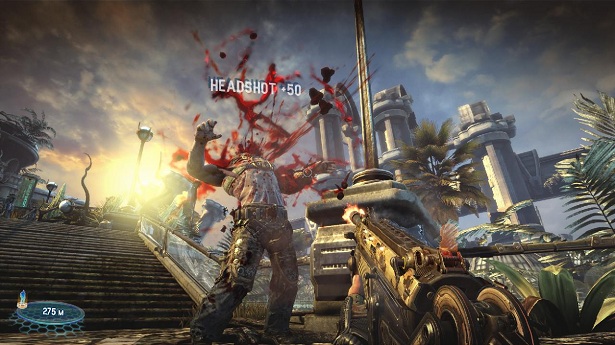

For a game many believe to be aimed at seven-year-olds, Pokémon is remarkably deep and complex. Do you know what an IV is? Or how a negative Nature could make all your EV training pretty much redundant? Read on to find out how to make your pocket monsters all they can be.
We’ll start by answering some of the most common questions surrounding EVs and IVs, before going into more detail on how best you will want to go about levelling up your Pokemon.
We’ve also created a list of the best Pokemon in Pokemon X and Y, for budding trainers to keep an eye out for.

Each Pokémon has its own Nature, a ‘personality’ that can affect its stats.
From the Summary screen, you can see which stats are affected – a stat listed in red is boosted by 10% while a blue one is reduced by 10%.
For competitive battling, you’ll want to catch or breed monsters until you get one that has a beneficial Nature (one that boosts its primary stat at the expense of one that it shouldn’t need) but it’ll also need good IVs if it is to make a mark on the battling scene…
IVs (or Independent Values) are the behind-the-scenes stats that make one Pokémon better than the next.
When hatched, encountered or otherwise created, a Pokémon is assigned a value of 0-31 in each statistic – these will determine how much each stat will grow by the time you reach level 100.
There’s no direct way to check these figures but they can be approximated, either by catching a decent number of wild monsters and comparing them (taking into account the 10% sway from Natures) or by visiting the Kiloude City Pokémon center, where the man on the left side can tell you how a Pokémon’s IVs look.

Unlike IVs, EVs are entirely player-influenced. These can be added in two ways – through battling or through Super Training – but either way, there are caps.
The maximum EV bonus is 252 for any one stat and 510 total, with every 4 points equating to one stat point at level 100.
This will usually mean that the best way to train a Pokémon will be to max out two stats with a few points to spare but every battle a Pokémon participates in will earn it EVs – you’ll need to use a Reset Bag in Super Training to wipe pointless points or begin EV training as soon as you catch a Pokémon in order to avoid EV points winding up being invested in worthless stats.
When you’ve got your hands on a decent-looking Pokémon you want to train, there are two options for EV training…

While not entirely as clear as it could be, Super Training is X and Y’s way of making EV training easier to understand.
It’s quicker and simpler than traditional EV training (at least until the postgame) and uses mini-games instead of traditional battling. Here’s how to prime your Pokémon for battle…
Step 1: Unlocking The Events
Using a Pokémon you aren’t planning on using in versus battles, go through each of the Super Training events one by one to unlock the third (and most lucrative) version of each variant.
These will then be available for all of your Pokémon.
The advanced trials don’t boost stats – you only need the third version of each stat-specific challenge to do this properly.
Step 2: Priming Your Pokémon
Stat-boosting items like vitamins (Iron, Carbos and so on) and Wings are a great head start in EV training, although they can’t take a stat’s EVs above 100.
Still, it’s a good way to get started, especially since the higher level training sessions can be pretty tough to begin with.
Use as many as you can to boost the relevant stats before training – you can always grab more from stores or from the prize cashier at the Battle Maison in Kiloude.
Step 3: Using Training Bags
In addition to the ball-tossing mini-games, training bags can also be used to enhance stats by boosting EVs.
Bags can be equipped for all six Pokémon at once and will be struck once a minute automatically, though you can tap the bottom screen to speed things along for the active Pokémon.
Stat bags come in three sizes – small ones are all but pointless, medium ones are okay in a pinch but you’ll generally just want to focus on using large bags, since the boost is so much greater.
Like the small and medium stat bags, most of the rest of the training bags are rubbish but there are a few you’ll want to look out for – Team Flare bags instantly put the user into a good mood (which in turn lets them find more bags), Double-Up bags give twice the EVs for one training session and Reset bags allow you to flatten EVs in case you mess up or train a Pokémon in the wrong stat.
Discard any useless ones quickly to free up space for decent ones that may be found or won.
Step 4: Super Training
Time for the mini-games at last! Use only the level 3 version of events in order to speed through the process – only do the ones you need but do them until they stop rewarding you with EVs.
You should in most cases be looking to max out the potential of two stats – Speed and one of the two offensive stats for attackers, one attack and one defense stat for slow attackers and any two of defenses and HP for damage sponges.
As for the mini-game itself, aiming at the targets is easier while holding the stylus on the lower screen to charge power, though don’t charge too long or you’ll overdo it and have to wait to take your next shot.
Just learn where the possible goal spawn points are, keep moving and keep the balls flying.
When two stats have been maxed out, simply do one more Super Training session in any of the other stats to finish the job – it should reward 6 EVs rather than 12 if you did everything right.

Depending on the stats you’re looking to boost, the more traditional EV training method might prove better for you.
It works on the same rules – a 510 point total to be distributed across stats – but EVs are earned purely through battling.
Generally speaking, a defeated Pokémon will award EVs of the same type as its strongest stat when fully evolved, so Gastly awards 1 Special Attack EV, for instance, while Golbat gives 2 Speed EVs.
It’s a little more complex than just running through Super Training, but it’s a lot quicker once you’re fully equipped. To get things done quickest, you’ll need the following:
* The Power items from the Battle Maison’s prizes (these add 4 EVs of the listed stat to anything the Pokémon equipped with the item earns).
* Pokerus, a rare disease that can be contracted from wild Pokémon. It has no adverse effects and serves only to double EVs earned. If you find it (the Pokémon Center staff will alert you), store an afflicted monster in the PC and it will carry the virus forever, allowing you to pass it onto other by placing them in the party and doing a few battles.
* A good spot. You’ll need to run from anything that doesn’t give useful EVs so try to pick somewhere where needed targets are common. Friend Safari gardens can be amazing for this, so long as you luck out with the residents.
With all of the above things, it should only take around 16-20 fights (against the right Pokémon, naturally) to max out the potential of a single stat – in a low-level area and with animations off, this can be done in minutes.
Progress can still be checked with the graph on the Super Training screen, plus training bags and vitamins both work as supplements for the traditional EV training method as well. Happy training!




 The Witcher 2 Enhanced Edition Achievements
The Witcher 2 Enhanced Edition Achievements Bulletstorm Demo Walkthrough
Bulletstorm Demo Walkthrough What Star Fox for the Wii U needs to do
What Star Fox for the Wii U needs to do ACU Dead Kings Artifacts Overview
ACU Dead Kings Artifacts Overview How to effectively use Call of Duty: Advanced Warfare EXO, Combat, Loadout, Grenades and more, Tips and Tricks for Multiplayer Mode
How to effectively use Call of Duty: Advanced Warfare EXO, Combat, Loadout, Grenades and more, Tips and Tricks for Multiplayer Mode